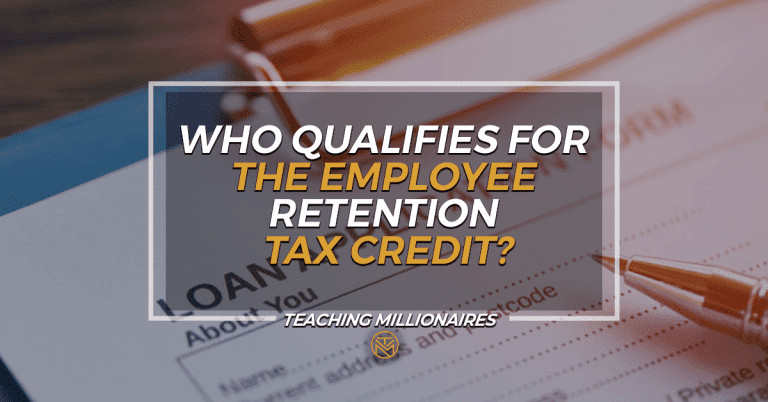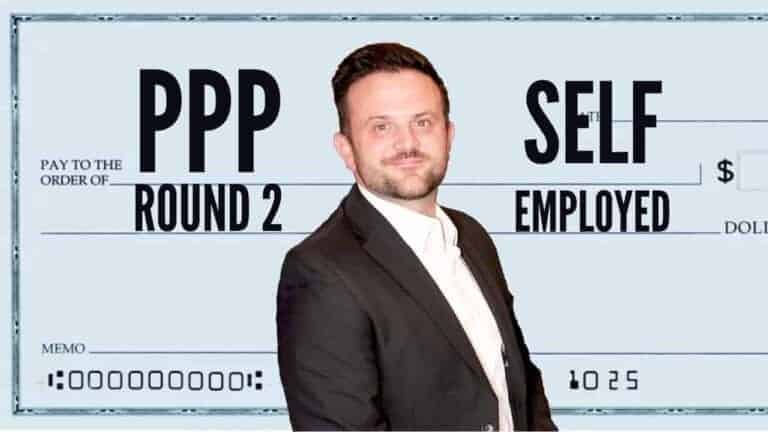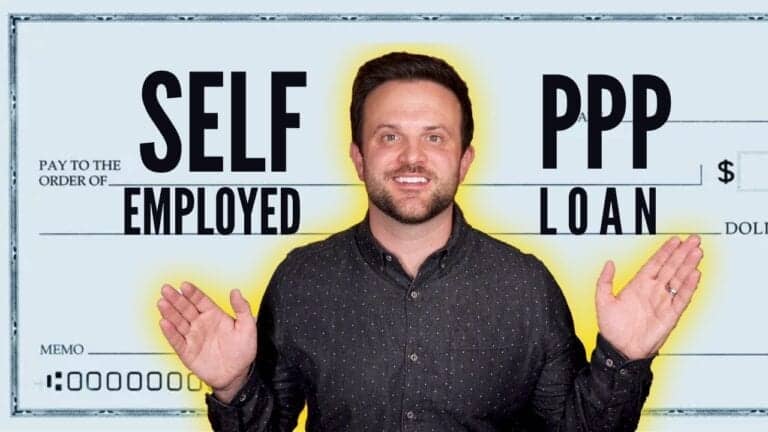What is the Employee Retention Credit ERC?

The stimulus package released March 2020 included the Employee Retention Credit ERC. There have been many changes since the program was announced. Here’s the latest information, including a chart that shows qualifiers that will help you understand if you’re eligible and how much money your business can potentially receive.
“TeachingMillionaires.com has partnered with CardRatings for our coverage of credit card products. TeachingMillionaires.com and CardRatings may receive a commission from card issuers. Opinions, reviews, analyses & recommendations are the author’s alone, and have not been reviewed, endorsed or approved by any of these entities.”
What is the Employee Retention Credit ERC?
Who Qualifies for the Employee Retention Credit?
If you’re asking yourself who qualifies for the Employee Retention Credit, then let me address a few common misconceptions. Yes, you can still get the Employee Retention Credit retroactively – it is not too late. It’s available to businesses that qualify during the time period March 13th, 2020, all the way through September 30, 2021.
Yes, you can still qualify for the Employee Retention Credit even if you received PPP money. Initially, this was not the case, but the ERC rules changed multiple times. Now, a good place to start to see if you qualify for ERC is with your accountant, CPA, and/or payroll company.
I’ve partnered with the ERC Specialists to help business owners with W2 employees find out if they qualify for ERC, file the appropriate paperwork with the IRS, and get their money. Below is a chart that breaks down who qualifies for the Employee Retention Credit, so let’s check it out.
Related Video Content: Who Qualifies for the Employee Retention Tax Credit?

How Does the Employee Retention Tax Credit Work?
The Employee Retention Tax Credit ERC has different calculations for 2020 and 2021. The Employee Retention Tax Credit is not a loan, and it’s not free money. Rather, it’s money you’ve already paid in the form of payroll taxes, and the IRS is refunding it back to you. I wrote an in-depth blog post about how the Employee Retention Tax Credit works that you can read here.
[elementor-template id=”6232″]
Employee Retention Credit 2020 Qualifiers
During the time period from March 13, 2020 to December 31, 2020, your business can qualify for $5,000 per employee max in ERC funds. That’s a lot of money! For example, if you have 10 employees, we’re talking upwards of $50,000 in Employee Retention Credit.
Here’s a summary of the Employee Retention Credit 2020 Qualifiers:
- Revenue Qualifier – if 50% of your gross receipts were in decline in 2020, compared to 2019, then your business qualifies for Employee Retention Credit for that year.
- Partial or Full Suspension Qualifier – this qualifier applies to both 2020 and 2021. If your business or trade was partially suspended due to a governmental mandate, then you could qualify for ERC. This is true even if your business did better financially in 2020 and 2021 compared to 2019. Basically, the partial or full suspension qualifier shows you were able to continue doing business, but the government shutdowns negatively interrupted your typical operations.
- Supply Chain Disruption Qualifier – if your business was nominally (more than 10%) impacted because you couldn’t get the supplies you needed, then you could qualify for ERC. This qualifier arrived later and after many rule changes, so it applies to many “essential” businesses.
Here’s an example – my local auto mechanic never shut down because he was deemed an “essential” business. He even did financially better throughout 2020 and 2021 compared to 2019. However, he was NOT able to get many of the parts he needed for repairs because of supply chain disruptions.
Overall, his typical operations were more than nominally impacted by the supply chain disruption. He never thought he qualified for the Employee Retention Credit until Supply Chain Disruption was officially added as an ERC qualifier. If your business was nominally (more than 10%) impacted because of Supply Chain Disruption, then you could qualify for the Employee Retention Credit ERC.

Related Content: How to Apply for Employee Retention Credit
Employee Retention Credit 2021 Qualifiers
The Employee Retention Credit 2021 qualifiers only apply to Quarter 1, Quarter 2, and Quarter 3 of 2021. There were legislative changes that eliminated Quarter 4 for 2021. That’s the bad news for 2021, but the good news is that you can get up to $7,000 per employee per quarter for 2021.

While many of the same ERC qualifiers overlap for 2021 compared to 2020, there are distinct differences that are more favorable and flexible for 2021. Here’s a summary of Employee Retention Credit 2021 Qualifiers:
- Revenue Qualifier – at least a 20% gross receipt decline compared to 2019. For example, when you look at Q1 2021 compared to Q1 2019, if your gross receipts declined 20% or more then you’re going to qualify for Q1 2021 for an Employee Retention Credit of up to $7,000 per employee.
- Partial or Full Suspension Qualifier – (see chart above) In 2021, there was a rollercoaster of government shutdowns. You probably remember some things started to open back up and people were even traveling then many businesses had to shut down all over again.
- Supply Chain Disruption Qualifier – (see above – same as 2020).
ERC Specialists are compiling a list of all government mandates, suspensions, and/or shutdowns both state and federal. If a partial or full suspension impacted your business, then that documentation is going to help qualify you for ERC funds. You can also click here and fill out qualifying questions to see if you are eligible for ERC.
[elementor-template id=”6189″]
Can New Businesses Claim the Employee Retention Credit?
The final item to address is can new businesses claim the Employee Retention Credit. Well, the good news is – mostly likely – yes, you can. A business that began after February 15, 2020, can be considered a Recovery Startup Business. This means you can still qualify regardless of the government shutdowns or your revenue.
I realize this only applies to a small subsection of businesses. However, a Recovery Startup Business can potentially get up to a maximum of $50,000 per quarter in Employee Retention Credit.
Key Takeaways
If your business has not already qualified for the Employee Retention Credit ERC, then it’s necessary to do your own due diligence. ERC Specialists is a company based out of Utah whose sole purpose is to help people get the proper paperwork filed with the IRS, so you can get this valuable tax credit.
However, the IRS takes their sweet time, so expect the entire process to take anywhere from 6-10 months before you see the funds arrive. I expect as more people learn about the Employee Retention Credit ERC, the wait is going to get longer. Hopefully, this information gets the ball rolling for your business.
[elementor-template id=”4878″]
Listen to Teaching Millionaires Podcast
As always, I’m Rich and until next time.
“TeachingMillionaires.com has partnered with CardRatings for our coverage of credit card products. TeachingMillionaires.com and CardRatings may receive a commission from card issuers. Opinions, reviews, analyses & recommendations are the author’s alone, and have not been reviewed, endorsed or approved by any of these entities. Responses are not provided or commissioned by the bank advertiser. Responses have not been reviewed, approved or otherwise endorsed by the bank advertiser. It is not the bank advertiser’s responsibility to ensure all posts and/or questions are answered. I am not a financial advisor. The information I share is for educational purposes only and shouldn’t be considered as certified financial or legal advice. It is imperative you conduct your own research. I am sharing my opinion only.”







